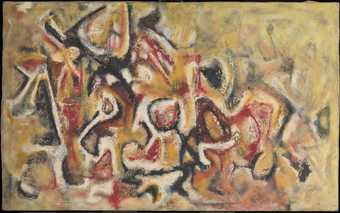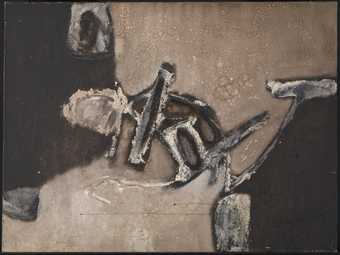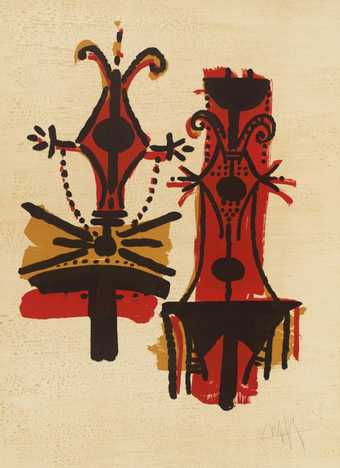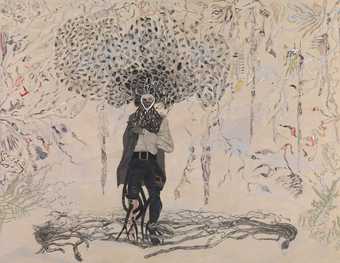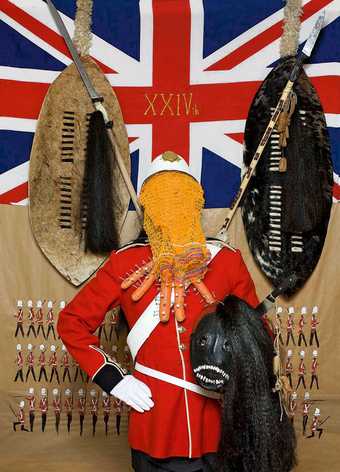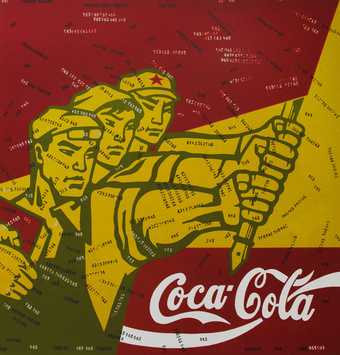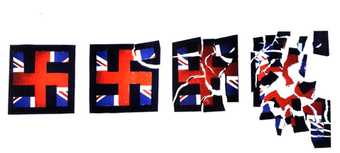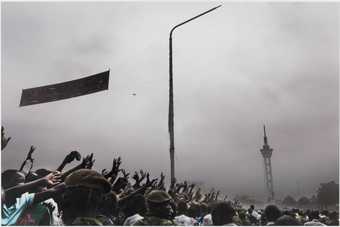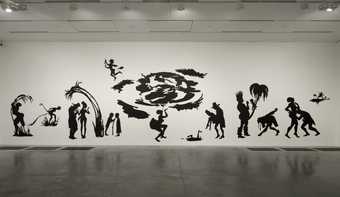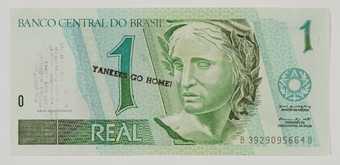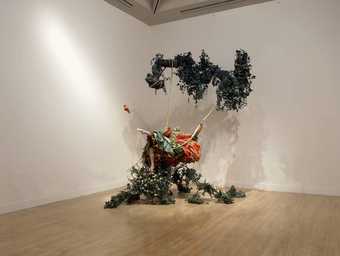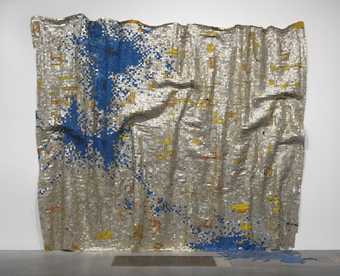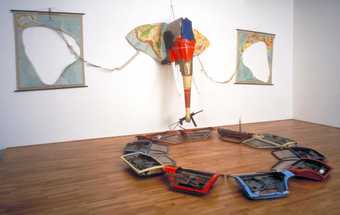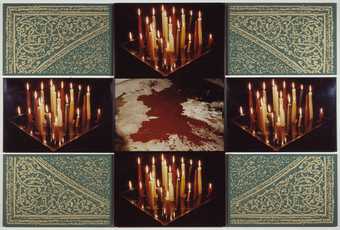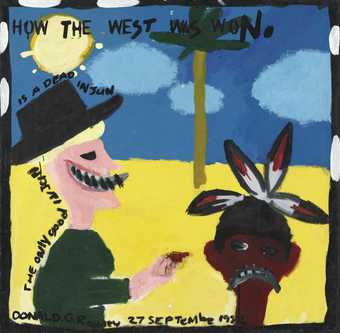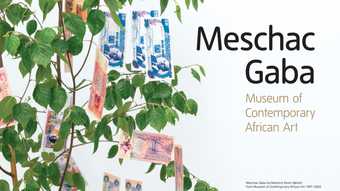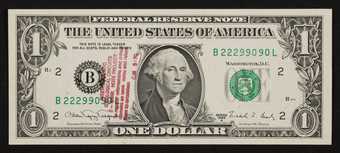
Cildo Meireles
Insertions into Ideological Circuits 2: Banknote Project (1970)
Tate
Postcolonial theory, which underpins postcolonial art, does not simply relate to the time after which a nation gains independence from its colonial ruler. It analyses and responds to the cultural legacies of colonialism and the human consequences of controlling a country in order to exploit the native people and their land. In doing this it also addresses how the society and culture of non-European peoples were seen from the perspective of Western cultural knowledge; how this was used to subjugate people into a colony of the European Mother Country; and the resulting identities of ‘coloniser’ and ‘colonised’.
Martinique-born intellectual Frantz Fanon was one of the leading anti-colonial thinkers of the twentieth century, and provided a theoretical framework for interpreting the oppression of the individual under imperialism – a significant element of much postcolonial art. An important influence on Fanon’s ideas was his teacher and mentor Aimé Césaire one of the leaders of the Négritude movement. In books such as Wretched of the Earth first published in 1961, Fanon analysed the effects of colonialism and decolonization and the role of class, race, national culture and violence in the struggle for national liberation. This and other books initiated the investigation of diversity and hierarchy in postcolonial cultures undertaken by writers such as Edward Said, Stuart Hall and Homi Bhabha.

